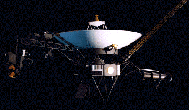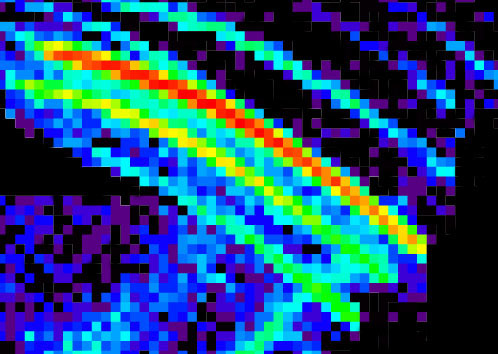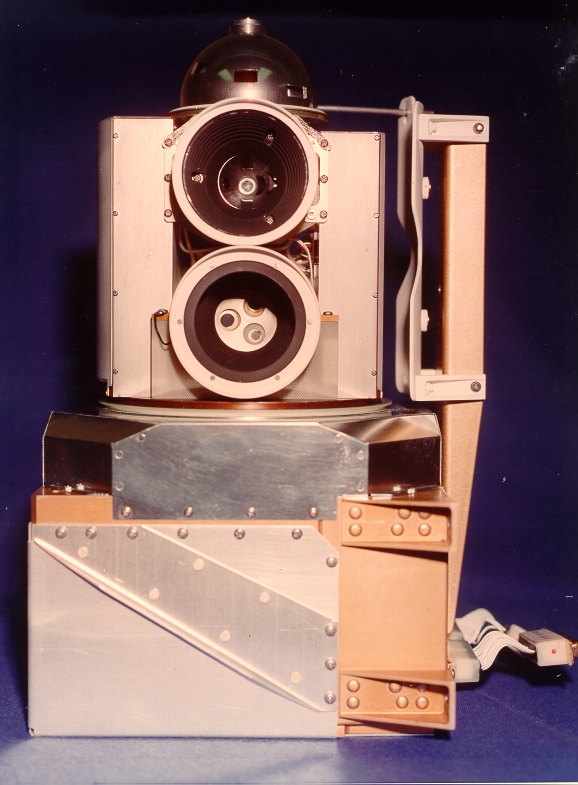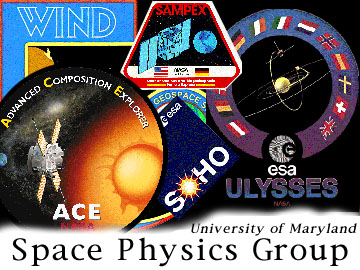

Trajectories
Mission
Instruments
LECP Data
Flux
Spectrograms
Hill 2004 AIP
Krimigis et al. 2004 AIP
Krimigis et al. 2003 Nature
Hill et al. 2003 JGR
Hill et al. 2003 ICRC
Hill & Hamilton 2003 ICRC
Hill et al. 2002 ApJ
Hill et al. 2001 ICRC
Hill et al. 2001 JGR
Hamilton et al. 1999 ICRC
Hill 2001 PhD-Thesis
Hill 1998 MS-Thesis (pdf)
Hill 1998 MS-Thesis (html)
Hamilton et al. 1997 ICRC
LECP Researchers
Prof. Douglas C. Hamilton
Dr. Matthew E. Hill
Prof. George Gloeckler
1. ACR Oxygen Transport
2. ACR & SEP Spectrograms
3. 151-Day ACR Periodicity
4. Large ACR Oxygen Increase
Related Sites
Voyager Project Home Page
JHU/APL Voyager LECP Site
U. of Kansas LECP Site
Return to the UMD LECP Page
 University of Maryland
University of Maryland
Voyager LECP Home Page
The Low Energy Charged Particle (LECP) instruments aboard the Voyager
1 and 2 spacecraft make composition measurements of energetic particles
above about 0.3 MeV/nucleon. Using one or both of the LECP instruments,
observations have been made of magnetospheric ions during each of the four
Voyager planetary encounters (Jupiter, Saturn, Uranus and Neptune) since
 the 1977 launches. Presently, and between the planetary encounters,
the LECP experiment has returned unique interplanetary data regarding energetic
ions in the heliosphere, (currently, Voyager 1 is the most remote human
artifact, at a distance of 81 AU or about seven billion miles from the
sun, nearly twice the distance of Pluto's orbit). In the outer heliosphere,
the LECP observations contribute to the understanding of the so called
anomalous cosmic rays (ACRs) which dominated during the solar-minimum conditions
typical of the mid, to late 1990's. ACRs are thought to originate
as ambient neutral atoms that enter the heliosphere due to the relative
motion of our solar system through the local interstellar medium (LISM).
Then some of these neutrals become ionized, "picked-up" by the expanding
solar wind, and accelerated at the solar wind termination shock (where
the solar wind velocity drops from super- to sub-sonic). Some of
the population of accelerated "pick-up" ions at the termination shock,
now called anomalous cosmic rays, diffuse and/or drift back in toward the
inner heliosphere and are subject to modulation due to propagating solar
disturbances. It is at this stage, as the ACRs are transported from
the remote heliosphere back toward the sun, that the LECP measurements
are made. Since ACRs are influenced by the broad phenomena listed
above, the study of these heliospheric constituents may bear on the physics
of the sun, heliosphere, termination shock, and local interstellar medium.
the 1977 launches. Presently, and between the planetary encounters,
the LECP experiment has returned unique interplanetary data regarding energetic
ions in the heliosphere, (currently, Voyager 1 is the most remote human
artifact, at a distance of 81 AU or about seven billion miles from the
sun, nearly twice the distance of Pluto's orbit). In the outer heliosphere,
the LECP observations contribute to the understanding of the so called
anomalous cosmic rays (ACRs) which dominated during the solar-minimum conditions
typical of the mid, to late 1990's. ACRs are thought to originate
as ambient neutral atoms that enter the heliosphere due to the relative
motion of our solar system through the local interstellar medium (LISM).
Then some of these neutrals become ionized, "picked-up" by the expanding
solar wind, and accelerated at the solar wind termination shock (where
the solar wind velocity drops from super- to sub-sonic). Some of
the population of accelerated "pick-up" ions at the termination shock,
now called anomalous cosmic rays, diffuse and/or drift back in toward the
inner heliosphere and are subject to modulation due to propagating solar
disturbances. It is at this stage, as the ACRs are transported from
the remote heliosphere back toward the sun, that the LECP measurements
are made. Since ACRs are influenced by the broad phenomena listed
above, the study of these heliospheric constituents may bear on the physics
of the sun, heliosphere, termination shock, and local interstellar medium.

